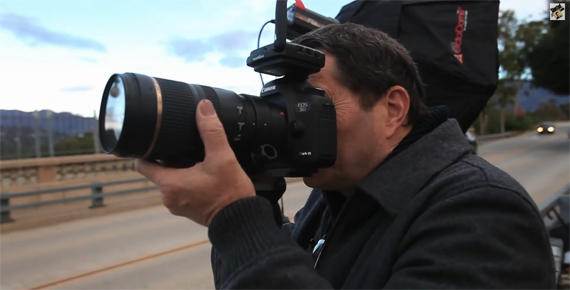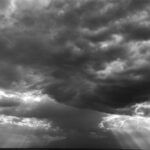Kit lens—to use or not to use? While kit lenses are much less expensive than better hobbyist and professional lenses, in the world of photography, cheaper build almost always means cheaper performance. That’s why most professional photographers advise beginners to skip the kit lens altogether and just purchase the camera they’re after—or at the very least, to quickly buy a better lens and use the kit lens only as a backup lens.
In an attempt to help beginner photographers spend their money wisely on new equipment, photographer Jay P. Morgan created this lens tutorial. In the video, Morgan discusses the differences between zoom lenses and prime lenses, varying vs. fixed apertures, and evaluates the value of image stabilization:
As Morgan explained in the video, there is no “one size fits all” method for buying lenses. Every photographer is different and so will have a different shooting style and preferences when compared to others. As such, it’s important to think about the type of photography you’ll primarily be doing and how the lenses within your price range relate to that.
Morgan identifies three key factors to take into consideration when choosing a lens according to your unique style: zoom vs. prime lenses, aperture, and image stabilization.
I. Zoom vs. Prime Lenses
Zoom lenses and prime lenses each have their own set of pros and cons, so it’s important to weigh those factors against your intended purpose for photography.

Morgan’s preferred zoom lens is the Tamron SP 70-200mm f/2.8 DI VC.
Zoom lenses offer incredible convenience, allowing the photographer to remain relatively stationary while achieving a wide range of focal lengths and perspectives—but at the price of sharpness and aperture. Because zooms contain moving parts, they can’t achieve the stellar sharpness characteristic of prime lenses; additionally, zooms are also known as “slower” lenses, since they have more trouble gathering light than the simple, streamlined primes.

This 50mm macro prime lens allows for sharp close-ups.
Prime lenses offer incredible sharpness and “fast” apertures at the cost of some convenience. With no moving parts, primes can deliver ultra-sharp images and can excel in lower-light situations where zoom lenses fall short. However, photographers who use prime lenses actually have to move closer or farther from their subjects in order to change perspectives, so some photographers choose to rely on the softer zooms.
II. Aperture
Aperture is how wide a lens can open up in order to gather light. Most kit lenses and lower-grade hobbyist lenses come with a varying aperture range such as 3.5-5.6. While the range may seem to offer some flexibility, lenses with fixed apertures are easier to use and provide much better image quality in terms of sharpness, bokeh, and depth of field.
“[Varying aperture] really is inconvenient,” said Morgan. “Your light changes, it’s hard to work with. It really is the sign of an inexpensive lens. When you get a fixed aperture, like a 2.8, that means that your light is not going to change.”

Morgan’s favorite 70-200mm Tamron lens has a f/2.8 fixed aperture.
III. Image Stabilization
Unless you’re planning to use a tripod for every single shot that you take, investing in lenses equipped with image stabilization technology is definitely worth forking over the extra cash. Image stabilization will not only improve the quality and sharpness of your hand-held photographs, but it will also allow you to shoot in lower light conditions and hand-hold even longer telephoto lenses with excellent results. Both Nikon and Canon sell lenses with impressive stabilization technology.
“If you’re going to hand-hold lenses at all, [use] some kind of vibration control,” Morgan said. “You absolutely have to have that. I think it’s worth the money—I really do.”
Would a zoom lens or a prime lens better suit your style of photography and the way you like to shoot? Are “faster” fixed apertures and vibration reduction technology—not to mention, better glass and higher quality build—worth the often-hefty prices of professional lenses? In the end, it’s all up to your preferences and values for photography.
“It really becomes a very surgical decision. You buy a certain lens to do a very certain thing,” said Morgan. “Speed costs money. How fast do you want to go?”
Like This Article?
Don't Miss The Next One!
Join over 100,000 photographers of all experience levels who receive our free photography tips and articles to stay current:






For beginners, even advanced beginners, I think they ought to consider a point and shoot. It is far easier to use and manage. There are many great ps now that could out perform slr with kit lens. Only after one have some control over light subtlety would a dslr be warranted.
When you are just learning to use your camera, stick with your kit lens. Kit lenses aren’t crap & you can take great photos with them. Keep track of the focal lengths you use so when you buy better (read more expensive) lenses, get the focal lengths you used most often. Also zoom lenses have more elements than prime lenses and each element degrades the image slightly. So if you used one focal length a lot, buy a prime in that focal length. You will be happy you did.
I would add that for new comers of dslr’s they should consider that one day they may be upgrading to a full frame camera and think twice about lens choices. I purchased several lenses designed for the smaller aps c size cameras and now I’m regretting that I did when I finally upgraded to a full frame camera. Full frame lenses can cost very little extra and one day you will be glad that you did. They will work with both camera types and in the long run be a wiser choice.
While I agree with this totally, the reality is that most amateurs aren’t going to be able to spend £700+ on a decent 24-70mm F2.8 lens. Also, in my experience with the readers of my blog, they aren’t at a stage yet where their kit lens is leting them down. The problems they have with blurred photos, underexposure or bad compensation needs addressing first.
This video isn’t disagreeing with that necessarily but if I was watching this after just buying a new entry level DSLR and you say ‘get rid of that kit lens’, you’ve just tuned me out.
Just feedback to consider, not sure what others think?